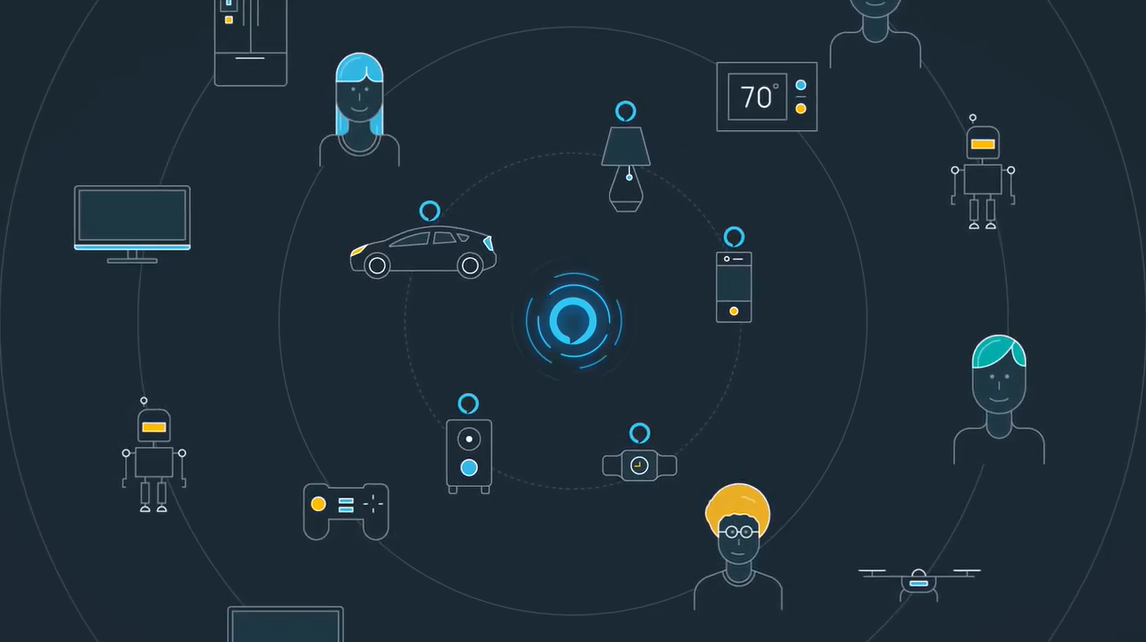 CLOUD
CLOUD
 CLOUD
CLOUD
 CLOUD
CLOUD
Amazon Web Services Inc. is stepping up its game in the emerging “internet of things” today by bringing voice control capabilities to low-powered devices where it was previously impossible to do so.
Amazon’s Alexa Voice Services are already widely used in its Echo smart speakers and other devices that can in turn be hooked up to various other products in the home, enabling consumers to control all manner devices using their voice. But for many devices, adding voice controls has been cost-prohibitive because of a lack of processing power, as Alexa Voice Controls have a minimum requirement of at least 100 megabytes of on-device RAM and an ARM Cortex “A” class microprocessor.
Now, that’s no longer the case. With Alexa Voice Services for IoT, Amazon is effectively offloading the processing requirements to its cloud, reducing the costs of voice control by up to 50%. Other tasks, including retrieving, buffering, decoding and mixing audio on devices, are also offloaded to the cloud, meaning the bar has been set lower than ever before. With AVS for IoT, everything from light switches to thermostats can now be controlled entirely using voice.
On the developer side, Amazon is expanding the capabilities of its AWS IoT Greengrass service, which extends AWS functions to connected devices, allowing businesses to perform data collection and analysis closer to its origin.
AWS IoT Greengrass gains two new capabilities today, including support for Docker containers, which make it easier to move compute workloads to and from the edge. Amazon said that’s important because many connected devices today run legacy or third-party applications that aren’t supported by AWS IoT Greengrass and therefore cannot take advantage of the built-in analytics capabilities it offers.
But with today’s update, developers now have an easy way to package their apps inside a Docker container image and deploy them to all manner of edge devices without needing to rewrite them first. What this means is that every edge device now has the ability to collect and analyze device data, making tasks such as monitoring and predictive maintenance much more efficient than before.
“When you know the state of your physical assets, you can solve a lot of things,” AWS Vice President of IoT Dirk Didascalou told SiliconANGLE. “You can also create a lot of new services. A lot of our customers have this need.”
The second update is a new feature called Greengrass Stream Manager, which provides companies with an easy way to collect, process and export data streams from their edge devices and manage the lifecycle of that data.
Didascalou said that’s important because the vast majority of data from connected devices “comes in the form of a stream, from sensors, moving machines etc.”
Streaming data isn’t easy to work with as it requires developers to build their own stream management system using AWS Lambda functions. That involves lots of heavy lifting which eats up a significant amount of time that could be better spent on simply building business applications.
“The new thing is that you don’t have to write Lambda code to do this, so it’s much easier,” Didascalou said.
AWS is also introducing more connectivity and control services to make life easier for IoT developers. These include Fleet Provisioning for AWS IoT Core, which makes it simpler to onboard a wide range of connected products, be it vacuum cleaners or construction excavators, to the AWS cloud. The new service automatically sets up each device with a unique digital identity and performs the device-side and cloud-side configuration needed for each device to connect and operate with AWS IoT upon its first connection to AWS IoT Core.
Also new is Configurable Endpoints for AWS IoT Core, which helps businesses that want to transition their IoT devices from self-managed infrastructure to fully managed AWS IoT services.
“This is important for big platforms that companies have built themselves that are hard to scale up,” Didascalou said. “[We can help them do that] by migrating to AWS IoT Core.”
Finally, Amazon is introducing Secure Tunneling for AWS IoT Device Management, which is a feature that makes it possible to create remote communications sessions between two devices, primarily for troubleshooting purposes.
“If MRI machine in hospital or something in factory stops working, but it’s in a private network or behind a firewall, this allows access,” Didascalou said.
With reporting from Robert Hof
Support our mission to keep content open and free by engaging with theCUBE community. Join theCUBE’s Alumni Trust Network, where technology leaders connect, share intelligence and create opportunities.
Founded by tech visionaries John Furrier and Dave Vellante, SiliconANGLE Media has built a dynamic ecosystem of industry-leading digital media brands that reach 15+ million elite tech professionals. Our new proprietary theCUBE AI Video Cloud is breaking ground in audience interaction, leveraging theCUBEai.com neural network to help technology companies make data-driven decisions and stay at the forefront of industry conversations.